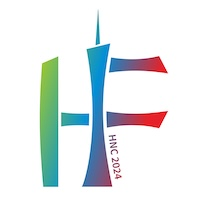Speaker
Description
Heavy quark-antiquark bound states, quarkonia, serve as a good thermometer for the quark-gluon-plasma (QGP) created in heavy-ion collisions. Due to color screening within the deconfined hot medium, quarkonia are expected to dissolve, making quarkonium suppression a signature of QGP formation. Hints for sequential in-medium modification of quarkonia according to the hierarchy of their sizes have also been observed in experiments. Thus knowledge of quarkonium properties at finite temperatures, especially that of excited states with large sizes, is crucial to understand experiment results and characterize QGP structure on different length scales.
In-medium quarkonium properties are encoded in the spectral function, which can be related to the Euclidean correlation function calculable on the lattice. To this end, we will present the lattice QCD studies on the temperature dependences of up to 3S and 3P bottomonium correlators in the range $T \simeq 133-250$ MeV [1], where 3P state is firstly explored. These correlators are computed using extended bottomonium operators with wave-function optimized for excited states and also Gaussian smeared for ground states, in order to be more sensitive to thermal effects. Lattice simulations are preformed with nonrelativistic dynamics for the bottom quark and on (2+1)-flavor gauge backgrounds using HISQ action near physical point, at two finer lattice spacings 0.0493 and 0.0602 fm compared with previous studies [2, 3].
We will show the temperature dependences of the thermal widths and in-medium masses extracted from bottomonium correlators with Gaussian- and Lorentzian-type ansatzes [2, 3] for the spectral function, where sequential thermal broadening can be confirmed but no clear mass shift is observed. We find the effects from thermal modifications are almost not affected by different choices of smeared sources.
References:
[1] H.-T. Ding, W.-P. Huang, R. Larsen, S. Meinel, S. Mukherjee, P. Petreczky, work in progress.
[2] R. Larsen, S. Meinel, S. Mukherjee, P. Petreczky, Phys. Rev. D 100 (2019) 074506.
[3] R. Larsen, S. Meinel, S. Mukherjee, P. Petreczky, Phys. Lett. B 800 (2020) 135119.
